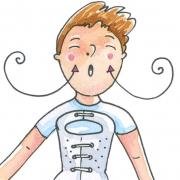Reliable Skeletal Maturity Assessment for an AIS Patient Cohort: External Validation of the Proximal Humerus Ossification System (PHOS) and Relevant Learning Methodology
Every year, the Italian Scoliosis Study Group selects the best published papers on conservative spine treatment from the global scientific literature.
Here is the abstract from one of these papers.
Reliable Skeletal Maturity Assessment for an AIS Patient Cohort: External Validation of the Proximal Humerus Ossification System (PHOS) and Relevant Learning Methodology
Theodor Di Pauli von Treuheim, Don T Li , Christopher Mikhail, Daniel Cataldo, Daniel R Cooperman, Brian G Smith, Baron Lonner
Spine Deform. 2020 May 8. doi: 10.1007/s43390-020-00105-5
Study design: Validation of classification system.
Objectives: To externally validate the Proximal Humerus Ossification System (PHOS) as a reliable skeletal maturity scoring system and to assess the learning curve associated with teaching the procedure to individuals of varying levels of experience.
Background: Assessment of skeletal maturity is essential for treatment decisions in Adolescent Idiopathic Scoliosis (AIS). PHOS is a five-stage system that uses the proximal humeral physis in assessing skeletal maturity and has been shown to reliably grade skeletal age leading up to and beyond peak growth age (PGA). This system is advantageous in the AIS patient, as it is often captured in standard scoliosis films.
Methods: A medical student, an orthopedic surgery resident (PGY-2), spine fellow, and experienced scoliosis surgeon in his 25th year in practice were given a three-slide PHOS learning module. Each participant rated 100 X-rays on two separate occasions, separated by 1 week. Intra- and inter-observer reliability, as well as cross-institutional reliability, were calculated using intraclass correlation coefficients (ICC) with 95% confidence intervals [CI95].
Results: Average intra-observer reliability ICC between scoring sessions was 0.94 [0.92, 0.96] and inter-observer reliability by level of training were 0.94 [0.91, 0.96], 0.93 [0.9, 0.95], 0.94 [0.91, 0.96], 0.96 [0.94, 0.97] for the medical student, PGY-2, fellow, and attending, respectively. Reliability across institutions was 0.99 [0.98, 0.99]. Combined rating observations (n = 400) showed 82% exact matches, as well as 17% and 1% mismatches by 1 and 2 stages, respectively. Similar to the PHOS developers, we found PHOS stage 3 to occur immediately after PGA.
Conclusion: PHOS is easily learned and employed by raters with varying levels of training. It comprises a five-stage system to reliably measure bone age leading up to PGA and thereafter. This new system relies on visualization of the proximal humerus, which is readily available on standard scoliosis X-rays.
Level of evidence: Level III.
Keywords: Humeral head ossification center; Pediatric growth markers; Scoliosis; Skeletal maturity classification system.



